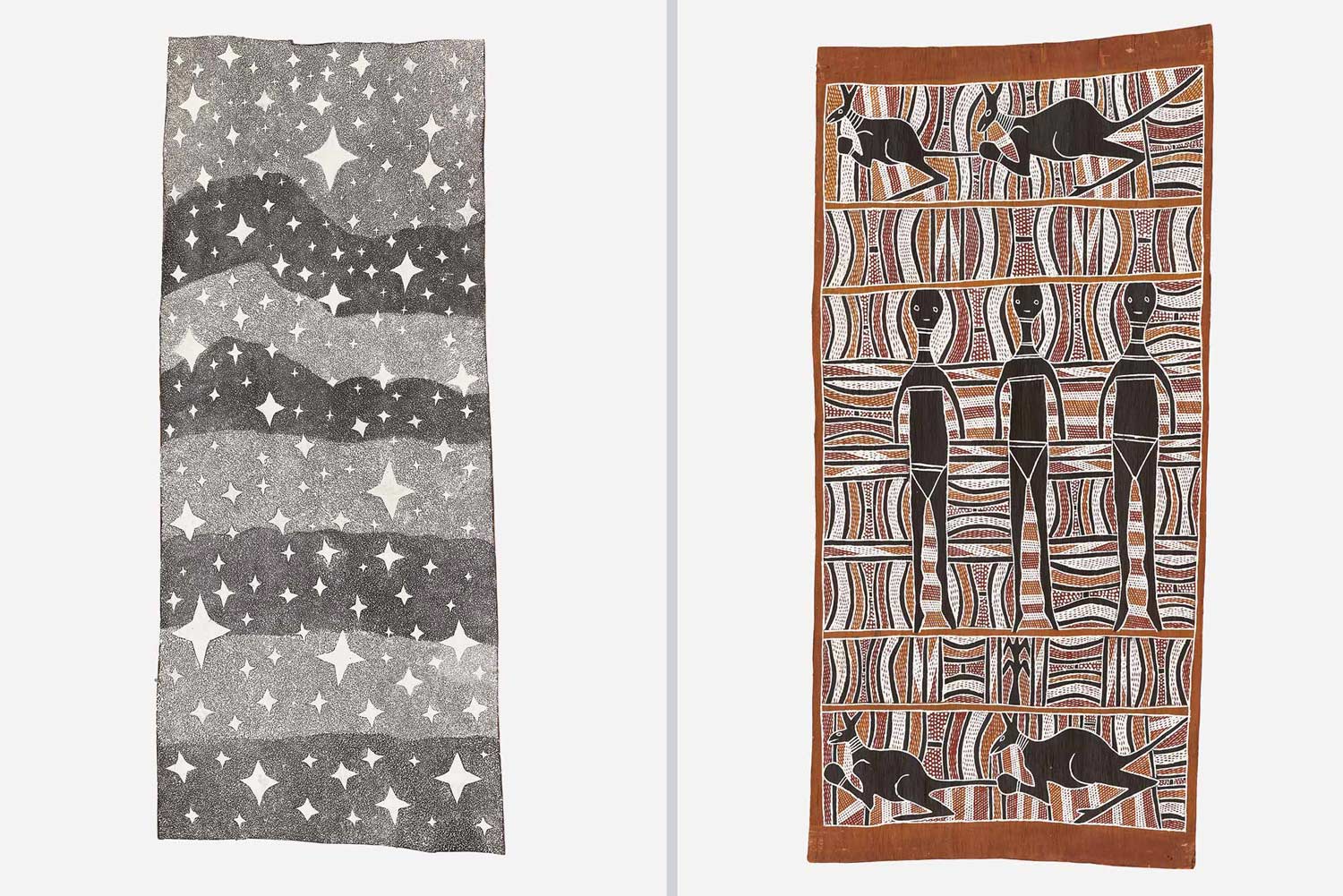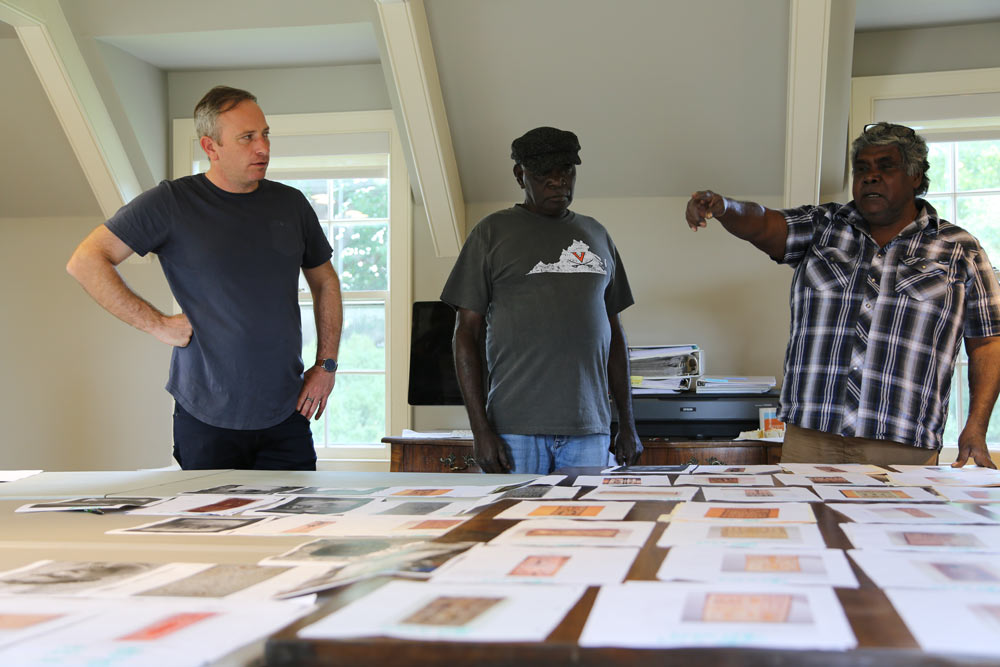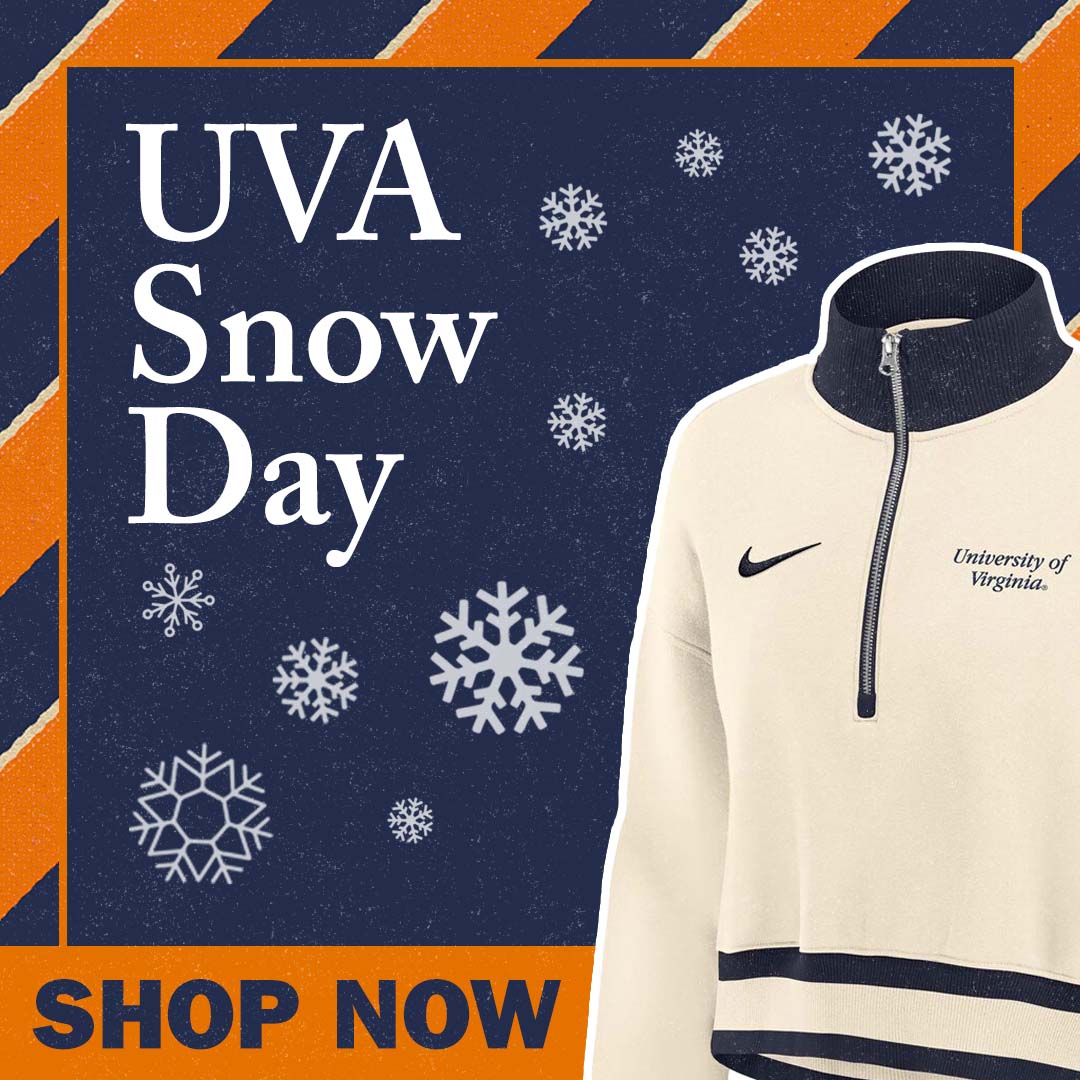“Maḏayin” came to the University thanks to the Yolnu artist and leader Djambawa Marawili. In 2015, during a residency at the Kluge-Ruhe Aboriginal Art Museum, Marawili began working to bring the paintings together and share them outside Australia. The Wall Street Journal, Washington Post and the New York Times have declared the “Maḏayin” exhibit a must-see.
The works are intricate, with detailed crosshatching and painted dots, depicting kangaroos, snakes and lizards.
“It’s not art for art’s sake. This is a repository of our knowledge,” said Mayatili Marika, a member of the six-person Yolŋu delegation who were present for Friday’s exhibition opening.
The paintings are made on eucalyptus bark, which traditionally also served a more utilitarian purpose, too; it was used to construct shelter.
Henry Skerritt, one of the exhibition curators, quipped that it can take as long as 65,000 years to make a bark painting, alluding to the long history of Aboriginal Australians. The process also includes the growing of the eucalyptus tree, stripping the tree’s bark, drying it and painting.
“Our entire history for centuries was oral, so this was our mode of communication,” Marika said.
Each painting includes Yolŋu songlines, ancestry and information about the land. There’s a lot of knowledge packed into one painting. Each contains the spirit of the artist who painted it, Marika said.
That was especially meaningful for Dhukumul Wanambi, another member of the Yolŋu delegation. Her father Wukun was instrumental in bringing the exhibition to the United States, making at least eight trips to locations in America and across Australia to bring it into being. He died three months before it opened at Dartmouth’s Hood Museum. Dhukumul undertook the same journey for the first time after hearing countless stories from her father about Charlottesville and UVA.
Wukun’s painting, “Destiny,” is on view in the exhibition. It shows a small fish swimming through rivers, creeks and oceans to search for his destiny.
“He is lost, and he needs to find home,” Dhukumul said.
Eventually, the fish realizes he is surrounded by family – who are both his destiny and his home.
The exhibition shows off the Yolŋu people’s older and contemporary works, including a painting called “Journey to America.” The painting shows the ancestral crocodile Bäru emerging from the waters at Yathikpa and throwing sacred fire across the waters, eventually reaching the Statue of Liberty.
“Journey to America” mirrors the journey the Yolŋu delegation took. It is a microcosm of the path that “Maḏayin” has taken, from Yirrkala to Charlottesville and even, eventually, to New York, where it will be shown at the Asia Society.
“Maḏayin” isn’t the only celebration of Indigenous Australian art on display in the Charlottesville area. Complementary exhibitions are being staged at the Kluge-Ruhe Aboriginal Art Collection of the University of Virginia, in the Upper West Oval Room at the Rotunda, Second Street Gallery and Les Yeux du Monde.












